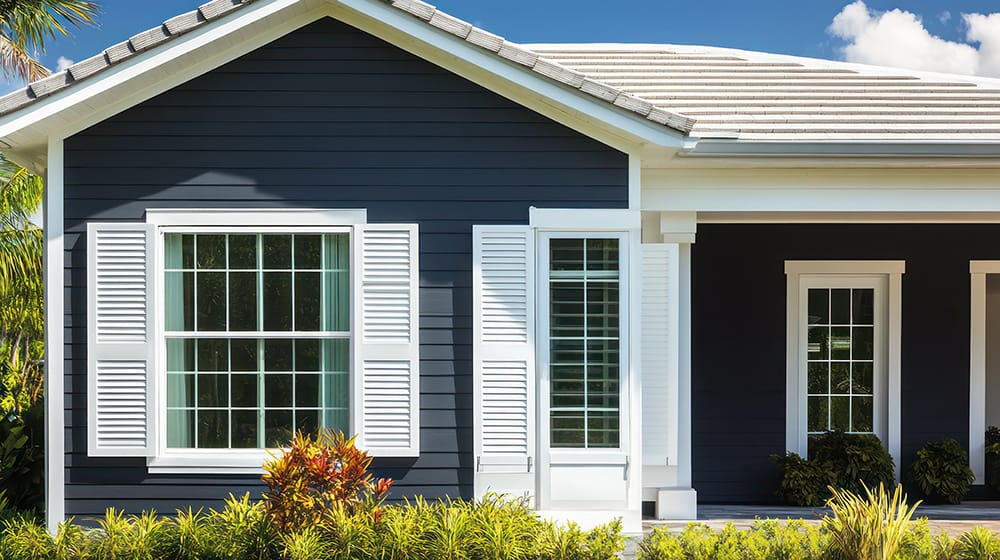Installing new siding is one of the best ways to protect your home, enhance curb appeal, and even improve energy efficiency. But the process can feel daunting if you’re not sure where to start. To simplify things, we’ve compiled answers to the most frequently asked questions about siding installation, inspired by Ron Hazelton’s practical, homeowner-friendly approach. Let’s dive in!
FAQ 1: What Are the Main Types of Siding Materials?
Siding comes in a variety of materials, each with unique benefits and drawbacks:
- Vinyl Siding: Affordable, low-maintenance, and available in countless colors.
- Fiber Cement Siding: Durable, fire-resistant, and mimics wood grain.
- Wood Siding: Offers natural beauty but requires regular maintenance.
- Metal Siding: Sleek and modern, resistant to pests and rot.
- Stucco: Ideal for dry climates, offering a smooth, seamless finish.
Ron’s Tip: “Choose a siding material that complements your home’s style and stands up to your local weather conditions.”
FAQ 2: How Do I Prepare My Home for Siding Installation?
Proper preparation ensures a smooth installation process and long-lasting results:
- Inspect Your Walls: Remove old siding and check for water damage or mold. Repair as needed.
- Install a Moisture Barrier: Add house wrap or felt paper to protect against moisture infiltration.
- Clear the Area: Trim bushes and move outdoor furniture to create a safe workspace.
Ron’s Tip: “Preparation is key to preventing issues like water damage and ensuring your siding lasts for years to come.”


FAQ 3: Can I Install Siding Myself, or Should I Hire a Professional?
While some homeowners opt for DIY installation, siding is a complex task that often requires expertise:
- DIY Installation: Vinyl siding is the most DIY-friendly option due to its lightweight nature and simple locking mechanisms.
- Professional Installation: Materials like fiber cement, stucco, or metal require specialized tools and skills.
Ron’s Tip: “If you’re confident in your abilities, start with a smaller project like a detached garage. For your home’s exterior, hiring a pro ensures quality and long-term performance.”
FAQ 4: How Long Does Siding Installation Take?
The timeline for siding installation depends on factors like the material, weather, and the size of your home:
- Typical Timeline: Most projects take 7–14 days from start to finish.
- Factors Affecting Time: Weather delays, custom materials, or repairs to underlying structures can extend the timeline.
Ron’s Tip: “Discuss the timeline with your contractor upfront and plan for contingencies, especially during rainy seasons.”
FAQ 5: What Are the Common Mistakes to Avoid During Installation?
Avoiding common pitfalls can save you time, money, and frustration:
- Incorrect Nailing: Nails driven too tightly can cause buckling, while loose nails may allow siding to detach.
- Ignoring Expansion Gaps: Siding needs room to expand and contract with temperature changes.
- Skipping a Moisture Barrier: Failing to install a barrier can lead to water damage over time.
Ron’s Tip: “Attention to detail is crucial—hire an experienced installer or follow manufacturer guidelines closely if you’re going the DIY route.”




FAQ 6: How Much Does Siding Installation Cost?
The cost of siding installation varies based on material, labor, and the size of your home:
- Vinyl Siding: $2–$7 per square foot.
- Fiber Cement: $5–$13 per square foot.
- Wood Siding: $6–$12 per square foot.
- Metal Siding: $3–$15 per square foot.
Ron’s Tip: “Budget for unexpected expenses like repairing water-damaged sheathing or upgrading insulation.”
FAQ 7: How Can I Maintain My New Siding?
Proper maintenance prolongs the lifespan of your siding and keeps it looking great:
- Vinyl: Wash annually with a garden hose and mild detergent.
- Fiber Cement: Inspect for cracks or chips and repaint every 7–10 years.
- Wood: Seal or paint regularly to prevent rot and pests.
- Metal: Check for dents and rust, and clean with a damp cloth.
Ron’s Tip: “A little maintenance goes a long way—regular care keeps your siding in top condition and avoids costly repairs.”
FAQ 8: How Does Siding Impact Energy Efficiency?
Siding plays a vital role in your home’s energy efficiency by providing insulation and protecting against drafts:
- Insulated Vinyl: Adds an extra layer of thermal protection.
- Fiber Cement with Foam Backing: Improves insulation while maintaining a sleek appearance.
- Add-on Insulation: Pair your siding with exterior insulation for maximum energy savings.
Ron’s Tip: “Ask your contractor about R-values—the higher the R-value, the better the insulation.”
Don’t wait!
Contact us today to schedule your consultation and see how Oakland Elite Siding can transform your home’s exterior into something truly stunning!
FAQ 9: What Should I Look for in a Contractor?
Choosing the right contractor ensures a smooth installation and high-quality results:
- Credentials: Verify licenses, insurance, and certifications.
- Experience: Look for contractors with specific experience in the siding material you’ve chosen.
- References: Ask for photos of past projects and read online reviews.
Ron’s Tip: “A reputable contractor will provide a detailed estimate and answer all your questions before starting work.”
FAQ 10: How Do I Choose the Right Siding for My Home?
Selecting the right siding depends on your budget, style preferences, and functional needs:
- Consider Your Climate: Fiber cement and metal excel in harsh weather, while vinyl works well in moderate climates.
- Think About Aesthetics: Choose colors and textures that complement your home’s design.
- Factor in Maintenance: Opt for low-maintenance options if you prefer less upkeep.
Ron’s Tip: “Take your time exploring materials and finishes—siding is a long-term investment that significantly impacts your home’s appearance and value.”
Final Thoughts: A Strong Start for Your Siding Project
Siding installation is a major upgrade that enhances your home’s protection, energy efficiency, and curb appeal. By understanding your options, preparing properly, and hiring the right professionals, you can ensure a successful project that stands the test of time.
Ready to transform your home’s exterior? Consult with a siding expert to explore the best materials, styles, and solutions for your needs.
